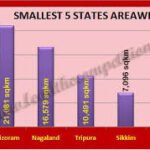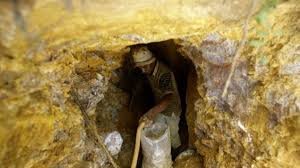Battles of Chhatrapati Sambhaji Maharaj: His Fight Against Mughals, Siddis & Portuguese
Chhatrapati Sambhaji Maharaj, the valiant successor of Chhatrapati Shivaji Maharaj, played a pivotal role in defending and expanding the Maratha Empire during his reign from 1681 to 1689. His military acumen and relentless campaigns against formidable adversaries such as the Siddis of Janjira, the Mughal Empire, and the Portuguese underscore his commitment to the vision of Hindavi Swaraj.
Battles Against the Siddis of Janjira
One of Sambhaji Maharaj’s initial military objectives was to neutralize the threat posed by the Siddis of Janjira, who were longstanding adversaries of the Marathas. In 1682, he launched a formidable assault on the Janjira Fort, deploying a force of 20,000 Maratha soldiers equipped with artillery. Despite a relentless 30-day siege, the fort’s robust defenses withstood the attack. Undeterred, Sambhaji Maharaj continued his efforts, engaging in subsequent battles such as the confrontation at Jaitapur in 1687 and the assault on Underi Fort in 1681, aiming to diminish Siddi influence along the western coast.
Confrontations with the Mughal Empire
The Mughal Empire, under Emperor Aurangzeb, sought to subjugate the burgeoning Maratha power. Sambhaji Maharaj’s reign was marked by continuous conflicts with Mughal forces. In 1681, he faced Muzaffar Khan, leading to intense skirmishes. The years 1682 and 1688 saw battles at Aundha, while 1683 witnessed confrontations at Kanchangad and Jalna. A notable episode was in 1683 when Sambhaji Maharaj allied with Prince Akbar, Aurangzeb’s rebellious son, conducting a campaign in the Konkan region against Mughal forces. Perhaps the most audacious of his campaigns was the 1681 attack on Burhanpur, a vital Mughal trading hub, where Maratha forces executed a swift raid, resulting in significant plunder and demonstrating the reach of Maratha prowess.
Engagements with the Portuguese
The Portuguese, with their colonial establishments along India’s western coastline, often found themselves at odds with the Maratha Empire. In retaliation against Portuguese support to Mughal campaigns, Sambhaji Maharaj initiated several offensives targeting Portuguese territories. The 1683 campaign against Goa stands out, where Maratha forces captured regions including Salsette and the island of Santo Estevão. Other significant engagements include the 1683 assault on Tarapur Fort, the 1685 attack on Kamandurg, operations in Daman in 1683, and the defense of Phonda Fort in 1683. These campaigns underscored Sambhaji Maharaj’s resolve to curb European colonial influence and secure Maratha maritime interests.
Final Years and Legacy
Throughout his nine-year reign, Sambhaji Maharaj remained steadfast in his defense against external aggressions, with stalwart generals like Hambirrao Mohite and Yesaji Kank bolstering his military endeavors. The Battle of Wai in 1687 was a significant encounter where Hambirrao Mohite was slain, marking a turning point. Subsequent internal dissent and betrayal culminated in Sambhaji Maharaj’s capture by Mughal forces in 1689. Offered clemency in exchange for submission, he resolutely refused, embracing martyrdom. His unwavering defiance not only galvanized Maratha resistance but also laid the groundwork for the eventual decline of Mughal dominance in the Indian subcontinent.

Why This Historical Account is Important
Understanding the military campaigns and strategies of Chhatrapati Sambhaji Maharaj offers profound insights into the resilience and tactical prowess of the Maratha Empire during a period of intense adversities. His confrontations with dominant powers of the era, including the Mughal Empire and European colonial forces, highlight a critical phase in Indian history where indigenous leadership fiercely defended sovereignty against external subjugation.
For aspirants of government examinations, especially those focusing on civil services, defense, and history-related disciplines, comprehending Sambhaji Maharaj’s endeavors is essential. His campaigns exemplify themes of strategic warfare, alliance formation, and resistance against imperialistic forces—topics that are frequently explored in competitive exams. Moreover, his unwavering commitment to his principles, even in the face of death, serves as a poignant example of leadership and valor.
Incorporating this knowledge not only enriches one’s historical perspective but also provides valuable lessons in leadership, strategy, and the complexities of colonial and imperial dynamics in India’s past. Such insights are invaluable for crafting nuanced responses in examinations and for developing a comprehensive understanding of India’s rich historical tapestry.
Historical Context
Chhatrapati Sambhaji Maharaj ascended the throne of the Maratha Empire in 1681, following the demise of his father, Chhatrapati Shivaji Maharaj. This period was characterized by heightened tensions as the Mughal Emperor Aurangzeb intensified efforts to annex the Deccan region, perceiving the Maratha sovereignty as a formidable challenge to his imperial ambitions. Simultaneously, European colonial powers, notably the Portuguese, were entrenching their presence along India’s western seaboard, aiming to expand their commercial and territorial foothold.
Sambhaji Maharaj’s reign was thus defined by multifaceted challenges: defending the nascent Maratha state against the expansive Mughal military campaigns, countering the entrenched Siddis of Janjira who controlled strategic coastal fortifications, and resisting European colonial encroachments that threatened regional autonomy. His strategic military initiatives and alliances were pivotal in navigating the complex geopolitical landscape of late 17th-century India, striving to uphold the sovereignty and integrity of the Maratha Empire amidst external and internal adversities.
Key Takeaways from Sambhaji Maharaj’s Military Campaigns
| S.No. | Key Takeaway |
|---|---|
| 1 | Relentless Defense Against Mughals: Demonstrated unwavering commitment to safeguarding Maratha sovereignty against Mughal expansionist policies. |
| 2 | Strategic Coastal Campaigns: Engaged in persistent efforts to neutralize the Siddis of Janjira, aiming to secure maritime boundaries and trade routes. |
| 3 | Counter-Colonial Initiatives: Launched offensives against the Portuguese in Goa and Daman (1683-1685) to curb European influence in India. |
| 4 | Swift and Tactical Offensives: Led aggressive raids such as the attack on Burhanpur in 1681, showcasing Maratha mobility and strategic warfare. |
| 5 | Martyrdom and Legacy: Refused to surrender to Aurangzeb, choosing death over submission, which later inspired continued Maratha resistance and eventual Mughal decline. |
Important FAQs for Students from this News
Q1: Who was Chhatrapati Sambhaji Maharaj?
A1: Chhatrapati Sambhaji Maharaj was the eldest son of Chhatrapati Shivaji Maharaj and the second ruler of the Maratha Empire, known for his military campaigns against the Mughals, Siddis, and Portuguese.
Q2: What were the major battles fought by Sambhaji Maharaj?
A2: He fought several significant battles, including the battles against the Siddis of Janjira (1681, 1682, 1687), Mughal forces in Burhanpur (1681), and confrontations with the Portuguese in Goa and Daman (1683-1685).
Q3: Why was Sambhaji Maharaj captured by the Mughals?
A3: In 1689, he was betrayed by his own courtiers and captured by Mughal forces. Despite being given the option to convert to Islam and be spared, he refused and was executed by Aurangzeb.
Q4: What was the impact of Sambhaji Maharaj’s martyrdom?
A4: His brutal execution strengthened Maratha resolve against the Mughals, eventually leading to the empire’s resurgence under Chhatrapati Rajaram and later, the Peshwas.
Q5: How did Sambhaji Maharaj contribute to India’s resistance against colonial powers?
A5: He actively fought against Portuguese expansion and sought to weaken European influence along the western coastline, ensuring Maratha dominance in strategic maritime regions.
Some Important Current Affairs Links


















 Exciting News!
Exciting News!  Join Our Telegram Channel Now!
Join Our Telegram Channel Now!
 Join our Telegram channel for a thrilling adventure into the world of daily current affairs.
Join our Telegram channel for a thrilling adventure into the world of daily current affairs. 
 Don’t miss out on the latest updates and insights! Click to join now and be part of the knowledge revolution!
Don’t miss out on the latest updates and insights! Click to join now and be part of the knowledge revolution! 
